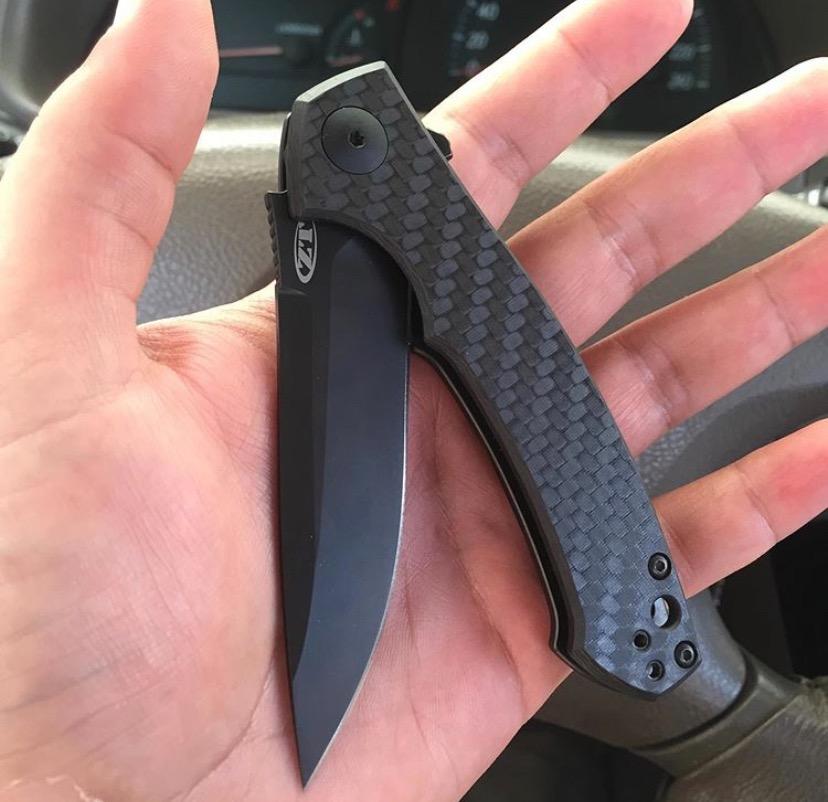Elmax steel and Vanax steel are two stainless steels made by Uddeholm via the use of powder metallurgy production methods.
The difference between Elmax and Vanax is that Vanax substitutes most of the carbon in Elmax with nitrogen to improve corrosion resistance and toughness.
This results in Vanax having better corrosion resistance but lower hardness and wear resistance than Elmax.
Vanax trades some hardness and edge-holding ability for a massive gain in corrosion performance through innovative nitrogen alloying.
Elmax vs Vanax Steel At A Glance
| Property | Elmax Steel | Vanax Steel |
|---|---|---|
| Corrosion Resistance | Moderate | Excellent, similar to H1 and LC200N |
| Toughness | Moderate | Better than Elmax |
| Hardness | Excellent, up to 62 HRC | Good, up to 61 HRC with cryo processing |
| Edge Retention | Excellent, very high hardness and carbides | Good, lower hardness limits edge life |
| Wear Resistance | Excellent, high hardness and carbides | Moderate, less hard carbides |
| Ease of Sharpening | Good, high hardness aids abrasion | Excellent, lower hardness is easy to abrade |
Corrosion Resistance
Vanax demonstrates superior corrosion resistance over Elmax because of its nitrogen addition, and higher chromium in solution.
Recommended Knives:
Vanax also has ability to maintain corrosion resistance even with high tempering temperatures.
The corrosion resistance of Vanax is so impressive that it is comparable only to specialty alloys like H1 steel and LC200N which are designed specifically for saltwater environments.
Vanax steel contains 1.55% nitrogen which replaces most of the carbon present in Elmax steel(1.7%).
Nitrogen modifies the chromium carbides present in Elmax into less harmful carbonitrides, improving corrosion resistance.
Vanax has 18.2% chromium versus 18% in Elmax. Elmax has more chromium tied up in harmful chromium carbides due to its high carbon content as opposed to carbo-nitrides in Vanax
Vanax is used in the same ultra-corrosion-resistant class as H1 steel chosen by Spyderco for their Salt series of diving and marine knives.
Toughness
Vanax demonstrates superior toughness over Elmax due to lower carbon content, substitution of carbon with nitrogen, less carbide content, and a more even distribution of fine carbonitrides.
The improved toughness of Vanax steel can be advantageous for knives to resist chipping and fracturing under heavy use.
Vanax has a lower carbon content (0.36%) compared to Elmax (1.7%). The high carbon content in Elmax forms hard chromium carbides that are detrimental to toughness.
Testing showed Vanax achieved 30J in an unnotched impact energy test at hardness levels of 59 HRC.
Elmax achieved a lower unnotched impact energy of 23J at similar hardness levels.
Hardness
Elmax steel reaches significantly higher hardness levels compared to Vanax steel when properly heat treated.
Elmax is specified by Bohler-Uddeholm to have a maximum working hardness of about 62 HRC, although production knives are often in the 60-61 HRC range.
In comparison, Vanax SuperClean is said to have a working hardness range of 60-62 HRC, but needs cryogenic processing to reach above 60 HRC otherwise.
The higher carbon content of Elmax (1.7%) versus Vanax (0.36%) allows for greater hardening through martensitic transformation.
Vanax substitutes most of the carbon with 1.55% nitrogen, which limits the hardness somewhat by modifying the carbides into softer carbonitrides.
Edge Retention
Elmax steel has better edge retention and wear resistance compared to Vanax steel, which is beneficial for knives.
Elmax has a higher hardness potential than Vanax, reaching over 62 HRC when peak aged versus 61 HRC for Vanax.
The higher attainable hardness provides Elmax with better edge retention and resistance to abrasive wear.
Elmax contains a high volume fraction of hard chromium carbides that impart good abrasion resistance.
Vanax contains a lower volume fraction of finer carbonitrides that are less effective at abrasion resistance and edge retention.
Ease of sharpening
Vanax steel is easier to sharpen compared to Elmax steel due to the lower hardness of Vanax which makes the edge less resistant to abrasion during sharpening.
Elmax has a higher working hardness potential than Vanax, reaching 62 HRC when peak heat treated versus 60 HRC for Vanax.
The lower attainable hardness provides Vanax with better edge retention and resistance to abrasive wear.
Elmax contains a high volume fraction of hard chromium carbides that impart ease of sharpening.
Final Thoughts Elmax vs Vanax Steel
Elmax and Vanax are excellent stainless steel choices, each with their own ideal applications.
For many knife uses, I would likely favor Elmax for its superior hardness, edge retention and wear resistance, while sacrificing some corrosion resistance compared to Vanax.
The high carbon content and hard chromium carbides in Elmax enable it to reach impressive hardness exceeding 62 HRC.
This hardness provides excellent abrasion resistance and edge holding ability which are critical for most cutting tasks.
While Vanax offers better corrosion resistance from its nitrogen alloying, for general-purpose knives this benefit may not outweigh the loss in wear performance versus Elmax.
Additionally, from a cost perspective, Elmax tends to be the more affordable option between the two premium steels.
However, for applications where knives will be subjected to saltwater or marine environments, Vanax would be my clear recommendation thanks to its dramatically better corrosion resistance.
The nitrogen in Vanax provides corrosion resistance on par with grades designed specifically for ocean uses.
For any dive, sailing, or saltwater fishing knives, Vanax is undoubtedly the superior pick.
